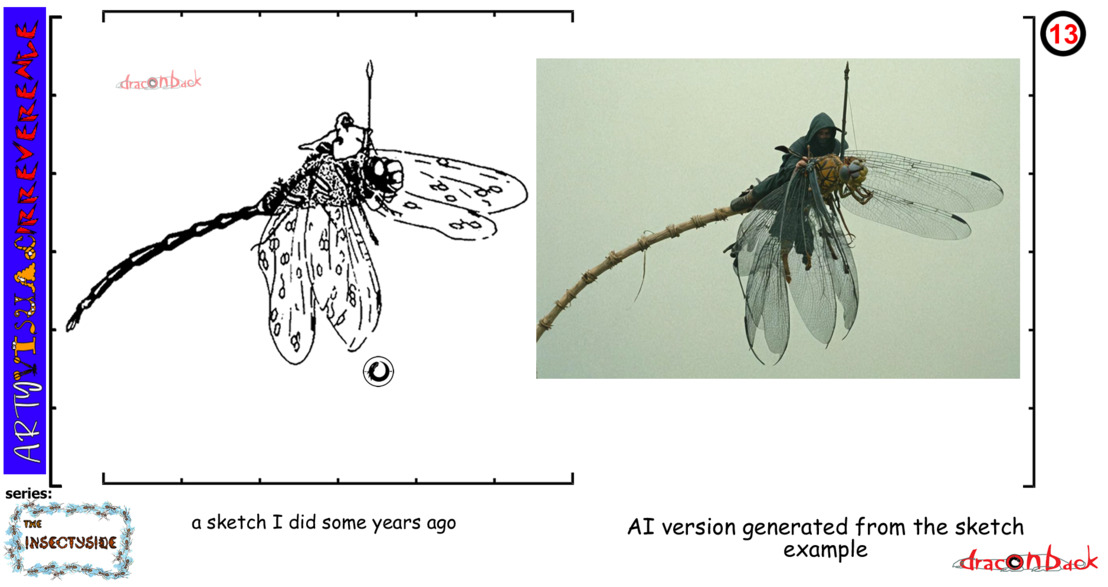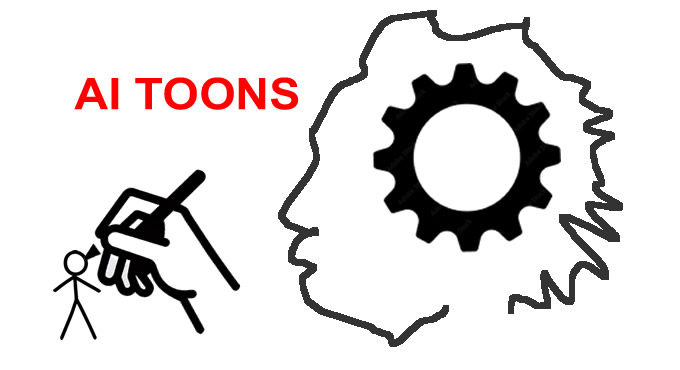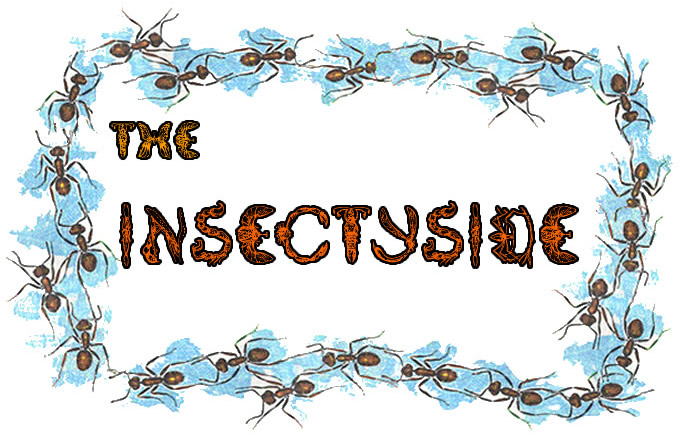|
|
Today's entry is from a drawing I did many years ago using as reference a very well preserved dragonfly that I found, dead (the dragonfly, not me), by the roadside. That image is accompanied by an AI recreation from Night Cafe. I was impressed by its output from a brief description of the image I wanted, seeded with the sketch as layout.
Dragonflies and their more delicate cousins, damselflies, belong to the order Odonata. Odonata is an ancient order of insects that includes dragonflies and damselflies. These predatory insects are characterized by their large multifaceted eyes, two pairs of strong transparent wings, and elongated bodies. Dating back over 300 million years, Odonata are among the oldest flying insect groups still extant today. They undergo incomplete metamorphosis, with aquatic nymphs (naiads) that develop into terrestrial adults.
- In Japan, dragonflies (tombo) symbolize courage, strength, and happiness, and have been featured on military equipment since ancient times.
- Native Americans of the southwestern United States believed dragonflies were spirits of healing waters that could restore life and cure illnesses.
- For the ancient Maya, dragonflies represented the souls of warriors who died in battle, connecting the living world with the afterlife.
- In European folklore, dragonflies were sometimes called "devil's darning needles," based on the superstition that they would sew up the mouths, eyes, or ears of misbehaving children while they slept.
- In Romania and parts of the Balkans, dragonflies were thought to be horses of witches or horses created by Saint George to combat mosquitoes and flies.
- Dragonflies can fly at speeds up to 35 miles per hour, making them one of the fastest insect fliers in the world.
- They possess near-360° vision due to their compound eyes, which contain up to 30,000 individual facets called ommatidia.
- Their vision and speed assist with their hunting success rate of about 95%, making them among the most effective predators in the animal kingdom
- Some dragonfly species migrate over extraordinarily long distances, with the globe skimmer (Pantala flavescens) known to make multigenerational migrations over 11,000 miles across the Indian Ocean.
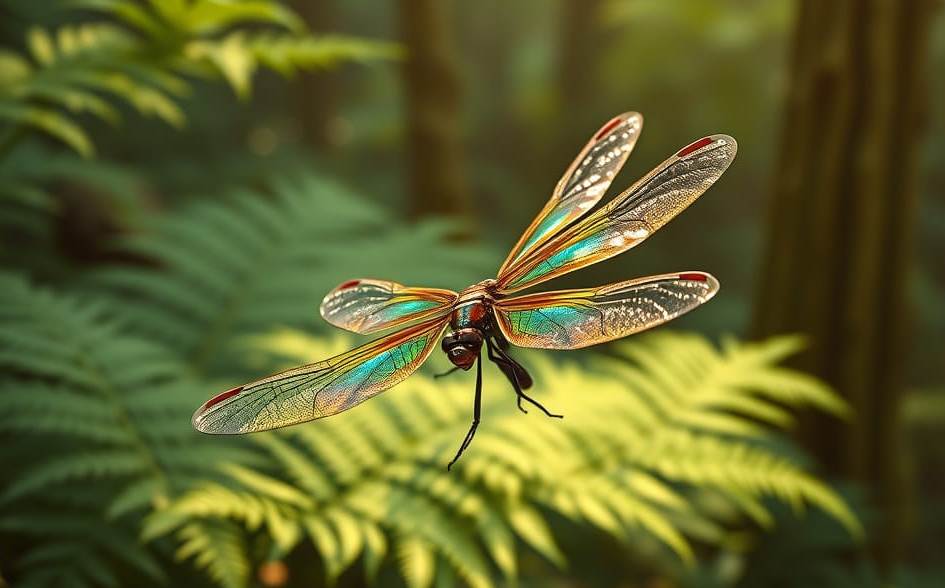 |
The largest known insects were relatives of modern dragonflies. They belonged to the extinct order Meganisoptera, and one of the most well-known species, Meganeura, lived around 300 million years ago during the Carboniferous period. These ancient insects had wingspans of up to 70 centimeters (about 28 inches), comparable to some modern birds such as the barn owl or pigeons. The ancient dragonflies massive size was biologically feasible due to the high oxygen levels in the atmosphere at the time, which allowed for larger body sizes in arthropods. (Except for the fifth wing, this Night Cafe creation of Meganeura isn't too far off the mark of current paleontological envisionings of the critter.) |
| |
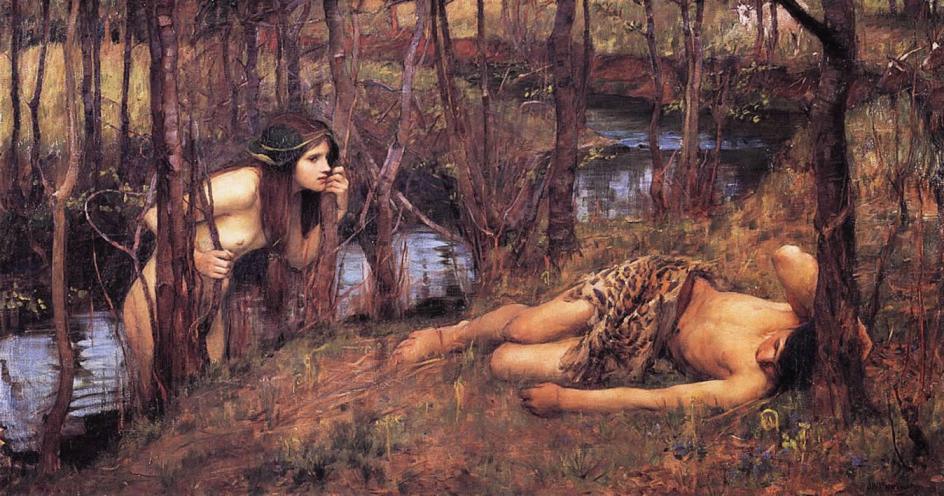 |
Dragonfly larvae, are called nymphs or naiads, after the alluring but dangerous mythical denizens associated with rivers, springs, and lakes. The insect larvae live underwater for months or even years before emerging as adults. In the above painting, A Naiad by John William Waterhouse, 1893, a water nymph approaches the sleeping Hylas. Hylas, a companion of Heracles, was sent to fetch water during the Argonauts' expedition. While drawing water from a spring, he was enchanted by the beauty of the naiads who inhabited it. They pulled him into the water, and he was never seen again.
|
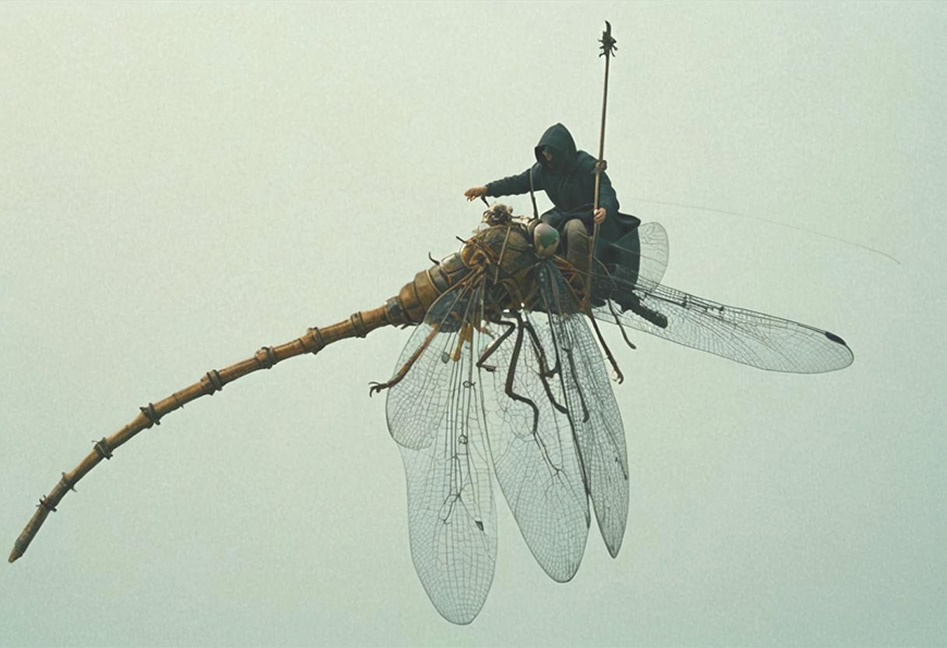 |
|
I think this alternative image that Night Cafe generated from the same text as for that at the very top of page was quite similar to that I got when asking for "a photorealistic image of a naiad water nymph of Greek folklore riding on a dragonfly nymph" (I was hoping to get something underwater-- but further prompts didn't result in anything I found interesting). I wonder if the AI remembered my previous request of months earlier...
|
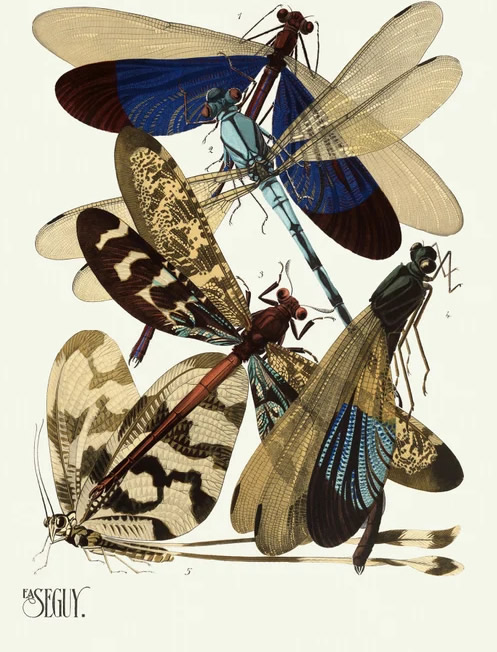 |
Dragonflies feature prominently in Art Nouveau jewelry and decorative arts from the late 19th century, such as those in the illustrations of E.A. Seguy. His works in the 1920s masterfully blended scientific precision with decorative motifs. |
| |
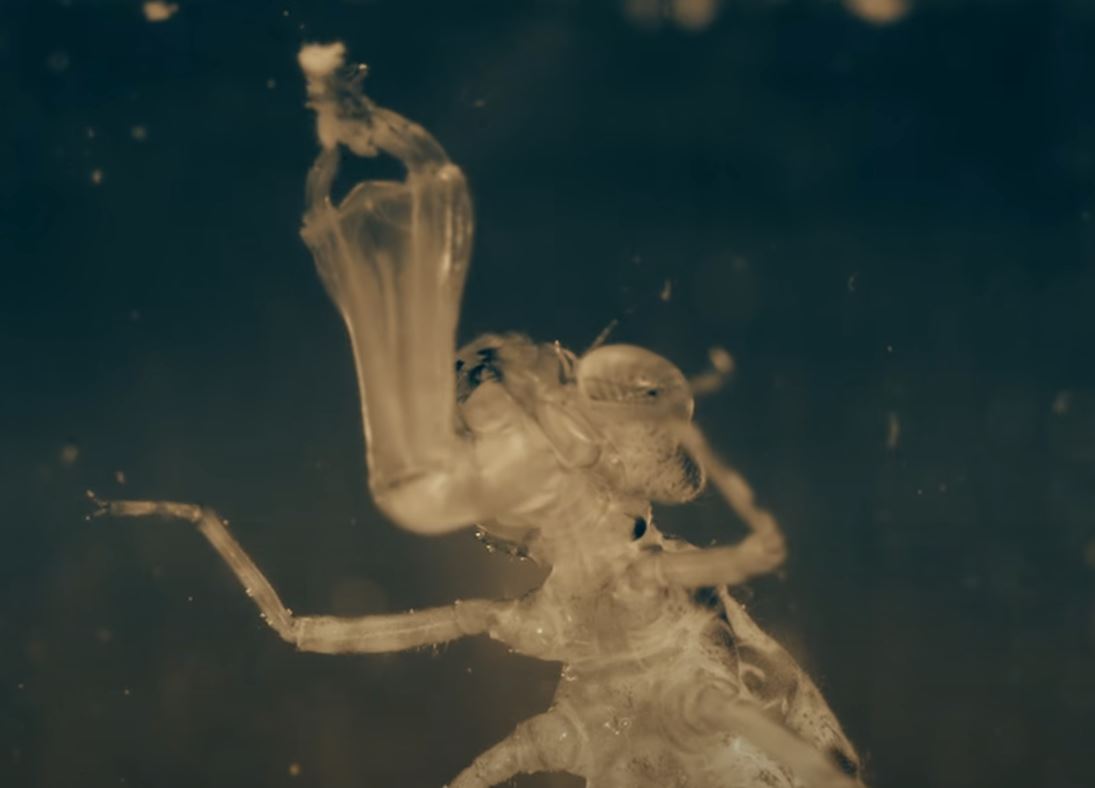 |
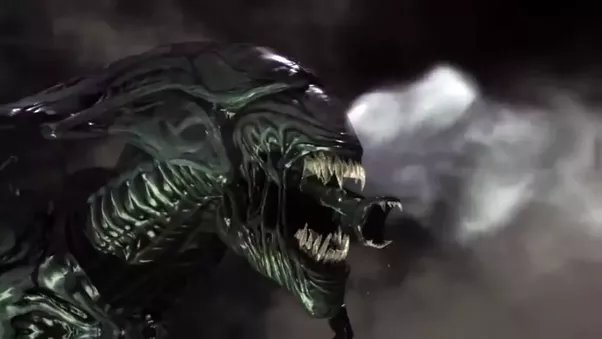 |
| Dragonfly nymphs possess a unique lower lip called a labium that can extend rapidly to capture prey; this hydraulic mechanism is one of the fastest movements in the animal kingdom, occurring in just milliseconds-- and inspired the puncturing jaw mechanism of the xenomorphs in the Alien movies. |
| |
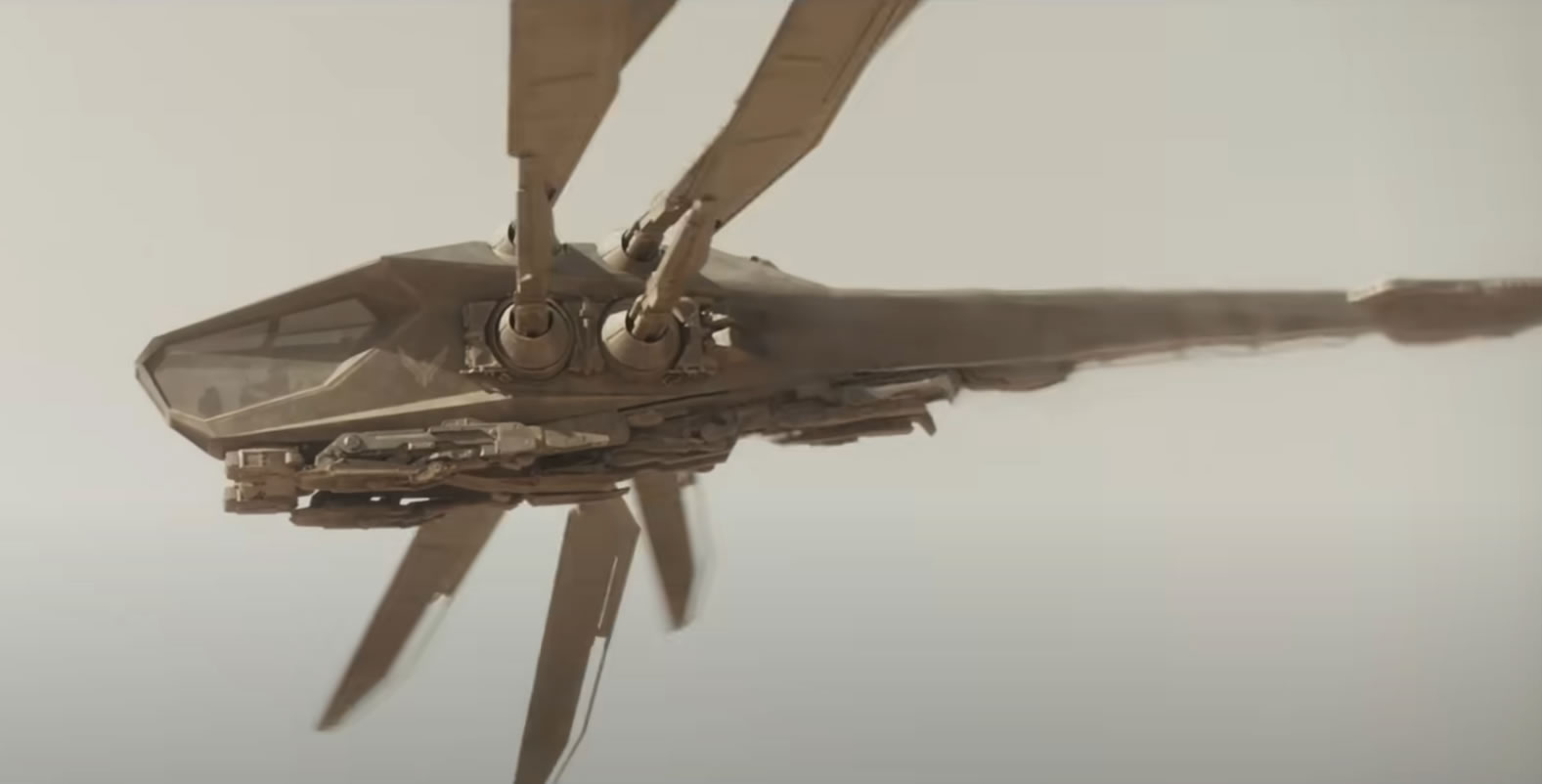 |
Dragonflies can move each of their four wings independently, allowing them to hover, fly backward, and make sudden directional changes—capabilities that have inspired drone technology. The ornithopters in Dune were also inspired by dragonflies. Denis Villeneuve, the director of the 2021 adaptation, mentioned in an interview that the sci-fi aircraft were modeled after the way dragonflies move and hover. The insects' unique wing structure and flight patterns served as a natural blueprint for the ornithopters' mechanics and aesthetics. |
| |
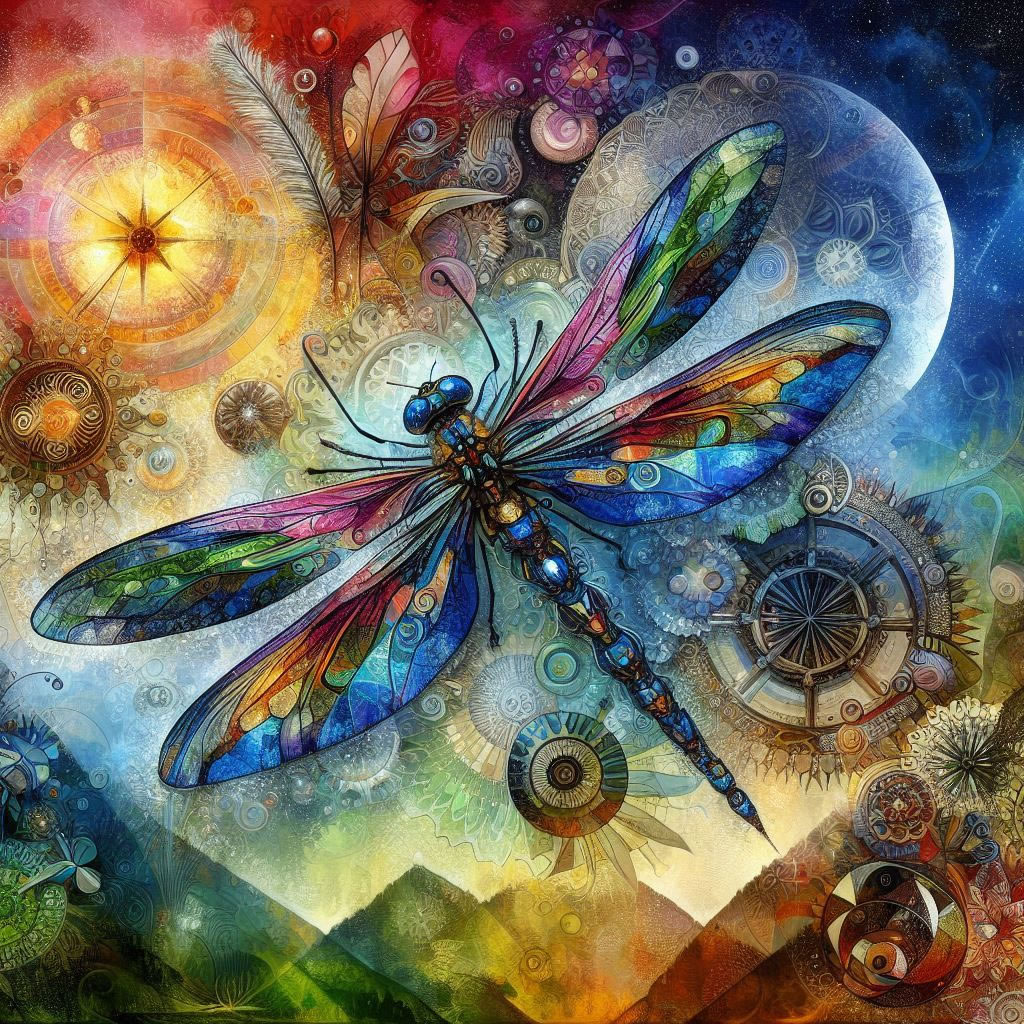 |
This Copilot creation I found rather pleasing... so just including it here for that reason alone.
|
|

